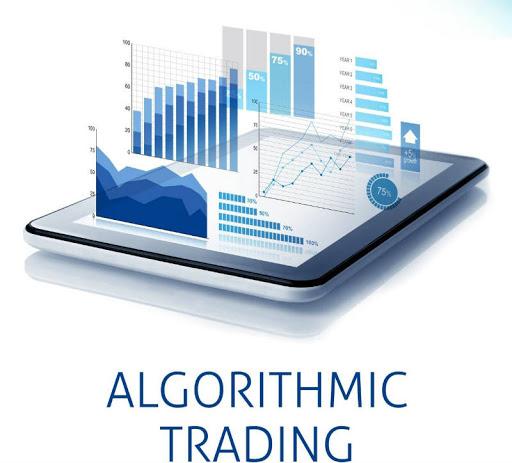17 Mar 2021
Algo Trading – Understanding the Concept with Examples

What is Algo Trading?
Algorithmic trading is a method that uses computer codes to develop a program that follows a defined set of instructions to place a trade. These sets of instructions are called algorithms which are based on timing, price, quantity, or any mathematical model. Algorithm trading is also known by other names like automated trading, black-box trading, or algo-trading.
Apart from more profit opportunities for the trader, algo-trading also renders markets more liquid and makes trading more systematized by eliminating the impact of human emotions on trading activities. This can save you valuable time and you can execute the trade instantly instead of scanning the markets all time.
A study in 2019 revealed that trading algorithms were involved in around 92% of trading in the Forex market.
It is widely used by investment banks, mutual funds, hedge funds, and pension funds that may need to circulate the execution of a larger order or perform trades too quickly for human traders to react to.
Note: To become a successful Algo trader, one should have a proper understanding of three domains, namely –
- Statistics & Econometrics
- Financial Computing and
- Quantitative Trading Strategies
Difference between Automated Trading and Algorithmic Trading
Though algo trading and automated trading systems are often used synonymously, there is a small difference between the two.
Automated trading usually refers to the automation of manual trading through stops and limits, which will automatically close out your positions when they reach a certain level, regardless of whether you are at your trading platform.
Algorithmic trading refers to how a trader develops and refine their codes to scan the markets and enter/exit trades based on ongoing market conditions.
Why Use Algorithmic Trading?
Algo-trading provides the following benefits:
- Trades are executed at the best possible prices.
- Trade order execution is instant and accurate
- Simultaneous automated checks on multiple market conditions.
- Using available historical and real-time data, algo-trading can be backtested for viability.
- There are fewer chances of human errors based on emotional and psychological factors.
- Reduced transaction costs.
- Minimize market impact.
How Algo Trading Minimizes Market Impact
A massive trade can shift the market price, also known as a distortionary trade, as it distorts the usual market price. To avoid such a situation, traders generally open large positions that may move the market in steps.
For example, an investor wanting to buy one million shares in ‘ABC’ company might buy the shares in batches of 1,000 shares. The investor might buy 1,000 shares every ten minutes for an hour and then evaluate the trade's impact on the company stocks' market price. If the price remains constant, the investor will continue with his purchase. Such a strategy allows the investor to buy company shares without increasing the price.
However, the strategy comes with two main drawbacks:
- If the investor needs to pay a fixed fee for every transaction he makes, the strategy might incur significant transaction costs.
- The strategy takes a good amount of time to complete. In this case, if the investor buys 1,000 shares every ten minutes, it would take him just over 166 hours (more than six days) to complete the trade.
Algorithm trading can solve the problem by buying shares and instantly verifying if the purchase has impacted the market price. It can significantly reduce the number of transactions and the time to complete the trade.
How Algo Trading Helps Different Investors
Different types of investors use algo-trading for many forms of trading and investment activities, including:
-
Short-term traders and sell-side participants, including market makers, arbitrageurs, and speculators, benefit from fast and automated trade execution. Algo-trading also helps create sufficient liquidity for sellers in the market.
-
Mid- to long-term investors or buy-side firms—including mutual funds, pension funds, and insurance companies—use algo-trading to purchase stocks in large quantities when they do not want to influence stock prices with discrete, large-volume investments.
-
Systematic traders, including trend followers, hedge funds, or pairs traders, find it much more efficient to program their trading rules and let the program trade automatically.
What Are The Algorithmic Trading Strategies?
- Trend-following Strategies
Trades are executed based on desirable trends, which are easy to implement through algorithms without touching predictive analysis. Using 50-day and 200-day moving averages are common trend-following strategies.
- Arbitrage Opportunities
Buying a dual-listed stock at a lower price in one market and selling it at a higher price in another market bids the price differential as risk-free profit or arbitrage. Implementing an algorithm to identify such price differentials efficiently allows profitable opportunities.
As price differentials often exist, the same arbitrage opportunity can be replicated for stocks versus futures instruments.
- Mathematical Model-based Strategies
Valid mathematical models, such as the delta-neutral trading strategy, allow trading on a combination of options and the underlying security.
- Index Fund Rebalancing Strategy
Index funds have defined rebalancing intervals to bring their holdings equivalent to their respective benchmark indices. This creates profitable opportunities for algo traders, who make capital on expected trades that offer 20 to 80 basis points profits, depending on the number of stocks in the index fund, before rebalancing.
- Volume-weighted Average Price (VWAP) Strategy
The target executes the order close to the volume-weighted average price (VWAP). This strategy breaks up a large order and releases dynamically identified smaller chunks of the order to the market using stock-specific historical volume profiles.
- Trading Range (Mean Reversion) Strategy
The trading range or mean reversion strategy is based on the concept that the high and low prices of assets are temporary events that periodically revert to their mean value/average value. Identifying and defining a price range and implementing an algorithm based on it allows trades to be placed automatically when the price of an asset breaks in and out of its defined range.
-
Time Weighted Average Price (TWAP) Strategy
Here, the purpose is to execute the order close to the average price between the start and end times, thereby minimizing market impact. This strategy breaks up a large order and releases dynamically identified smaller chunks of the order to the market using evenly divided time slots between a start and end time.
- Implementation Shortfall Strategies
This strategy targets minimizing the execution cost of an order by trading off the real-time market, thereby saving on the cost of the order and benefiting from the opportunity cost of delayed execution.
-
Percentage of Volume (POV) Strategy
Until the trade order is filled, this algorithm sends partial orders according to the defined participation ratio and the volume traded in the markets.
- Price Action Strategy versus Technical Analysis Strategy
There are some more algorithmic trading strategies, broadly divided into Price Action Strategy, Technical Analysis Strategy, and a combination of both. However, most traders choose the price action strategy or the technical analysis strategy, and only a few use a combination of them.
- A Price Action Strategy applies price data from previous open/close or high/low levels of a candlestick chart, and the algorithm would trigger a buy or sell order if similar levels were achieved in the future
For example, you can create an algorithm to enter buy or sell orders if the price rises above point A or falls below point B. Scalpers who want to make a series of small and instant profits throughout the day on highly volatile markets commonly use this algorithm, a process known as high-frequency trading (HFT).
-
A Technical Analysis Algo Trading Strategy concerns technical indicators such as Bollinger bands, stochastic oscillators, MACD, the relative strength index, and many more.
For example, You can create algorithms based on Bollinger bands to open or close trades in highly volatile markets. With this strategy, you can create an algorithm to act on the parameters of these indicators, such as closing a position when the market is spiking high fluctuation.
- A combination algorithmic trading strategy uses price action and technical analysis to confirm suspicions about price action by analyzing charts with indicators. You can configure your combination strategy per the market trend, the size of the trade, the time frame, and the different indicators the algorithm is designed to use.
Technical Requirements for Algorithmic Trading
The following are the technical requirements required for trading an algorithm:
- First and foremost, having full-fledged computer programming knowledge hired programmers, or pre-made trading software.
- The ability and infrastructure to backtest the system once it is built before it goes live on real markets.
- Access to market data feeds that will be monitored by the algorithm for opportunities to place orders.
- Historical data should be available for backtesting based on the complexity of the rules implemented in the algorithm.
- Network connectivity and access to trading platforms to place orders.
Bottom Line
Now that you have gained a basic understanding of algorithm trading, its strategies, and how algo traders use it, you can start investing wisely.
Learn in detail about Algorithm Trading in our Artificial Intelligence Automated Algorithm Trading Course provided by NIWS, the best all-in-one training platform in the Stock Market. At NIWS, we have our expert faculty from mathematics and computer science backgrounds who share their experiences and strategy ideas/tactics with you during the course. So don't wait to join the share market training in Indore, NIWS and fruitful complete knowledge of the stock market.
Get Placed, Learn More and Implement On the Job
Become A Pro Algo Trader | Start Your Own Algo Trading Desk Today
Learning in the algorithmic world never stops!!
